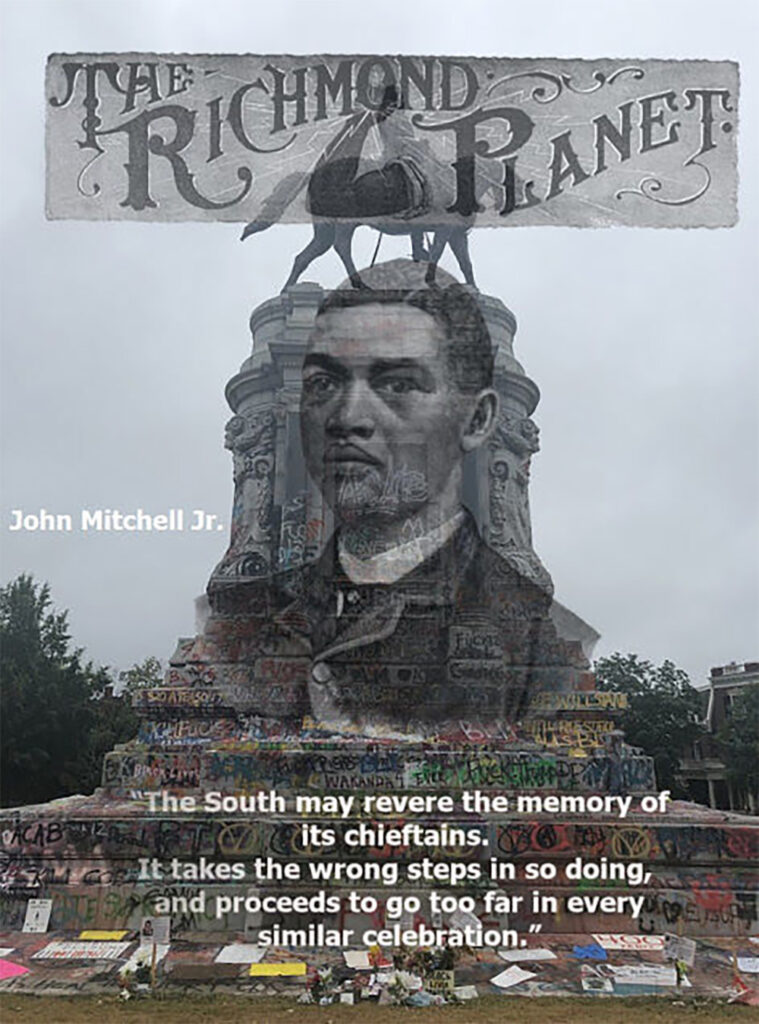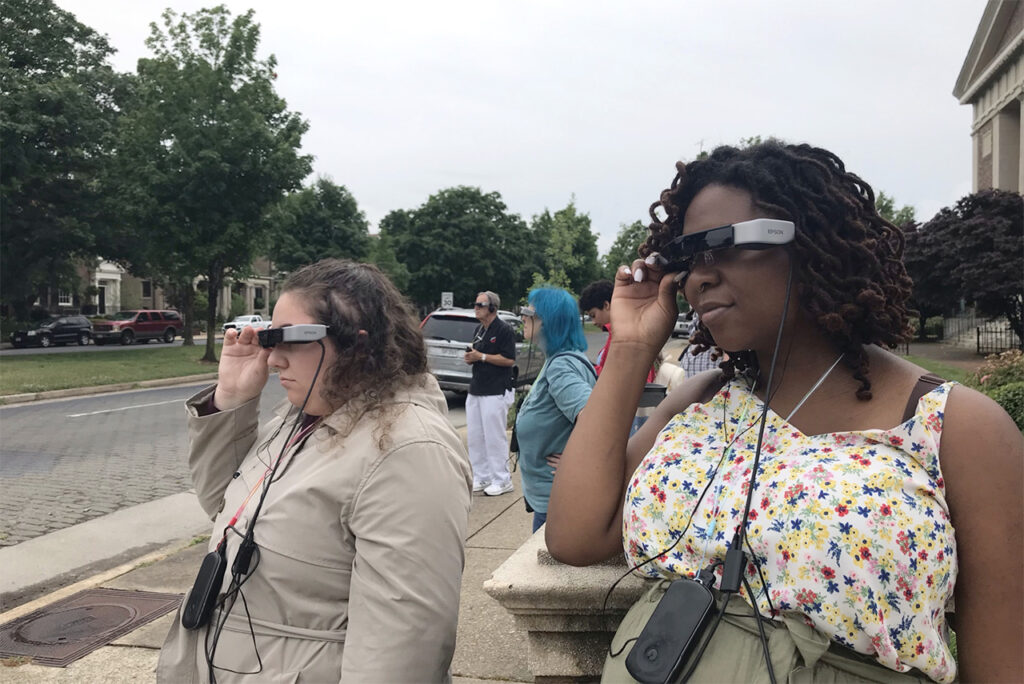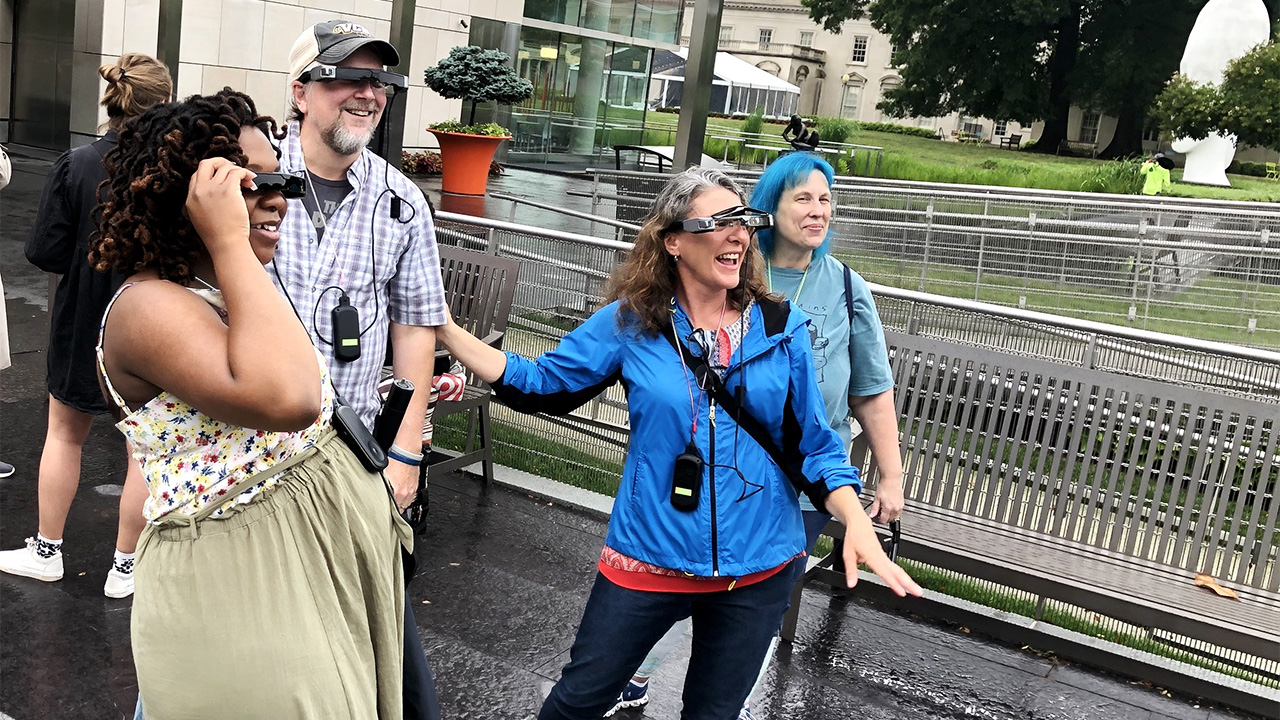The racial justice protests that swept U.S. cities in 2020 forced a nation to reexamine the structural inequities of its modern institutions. The Valentine, a museum dedicated to presenting the history of Richmond, Virginia, is changing how visitors see the city’s landmarks — quite literally, it has integrated augmented reality (AR) into walking tours down Monument Avenue.
Beginning this summer, those who join the two-hour Monument Avenue: Origins and Reverberations tour along Richmond’s broad and leafy thoroughfare, which became a local epicenter of protest and celebration last summer, will do so with a museum guide and a pair of smart glasses.
The tour traces the Civil War, its aftermath, and the origin of the monuments with the wearables overlaying the onsite reality with snapshots from the past including original source materials and period photographs, many of which were dug out of archives at the Virginia Museum of History and Culture. Accompanied by audio, visitors will see the devastation of Richmond in 1865 when retreating Confederates set fire to parts of the city and documents telling the stories of Confederate monuments from their construction to, in many cases, their being removed in 2020.

One of the many sights on the tour: a quote from John Mitchell Jr., editor of The Richmond Planet, superimposed over the Robert E. Lee monument. Image: ARtGlass
Courtesy of a partnership between the Valentine and ARtGlass, a Richmond-headquartered AR company specializing in crafting AR experiences for cultural attractions which first trialed the tour last summer, it is, as the museum proudly boasts, the first institution in the city to embrace AR.
“The Richmond community is wrestling with how to ensure our public art reflects our community values,” says Christina Vida, General Collections Curator, at the Valentine. “Partnering with ARtGlass is one way we can continue to listen to our constituents; this technology allows us to bring the context outside of the museum walls and back into the city.”
For much of the 20th century, local discussion of this historical context has been plagued with false narratives. In the case of Richmond’s monuments, their very existence as Jim Crow-era public artworks deliberately extolling the Lost Cause mythology to impact the opinions of Virginians has not been broadly understood. By placing these sites alongside original sources demonstrating such provenance, as Origins and Reverberations does, it creates a fact-based starting point for discussion.
And while the tour’s technology creates an immersive experience, it is fundamentally about person-to-person dialogue (guides, it should be noted, are trained in conflict management).
“We watched our city become a focal point for discussions about systemic racism after the murder of George Floyd, and we wanted to use our technology to drive honest and fact-based dialogue,” says Lexi Cleveland, ARtGlass VP of Client Services and lifelong Richmond resident. “Wearable AR can be very impacting emotionally and intellectually, but processing the content together in a conversation is where there is great value.”


“Wearable AR can be very impacting emotionally and intellectually,” says Lexi Cleveland, pictured above leading the tour, which concludes at the Robert E. Lee monument. Image: ARtGlass
With more than 50 AR deployments at cultural attractions around the world, ARtGlass AR augments experiences at Pompeii in Italy and Monza’s Formula 1 track, and is no stranger to cultural sites tackling what it calls “tough topics” of U.S. history, including tours for George Washington’s Mount Vernon and James Monroe’s Highland, sites at which both U.S. presidents kept enslaved people.
As Cleveland explains, this tour was different, both because it takes place in ARtGlass’ own backyard and since some events discussed are still so recent. Demand far exceeded expectations and capacity, so it donated its services to an organization also determined to tackle Richmond’s tough questions “to meet demand and to continue to help drive the dialogue forward.” Together, the tour will be made available for free to all Richmond Public Schools and Title 1 students.
For a museum in the business of constantly interpreting Richmond’s turbulent history, it’s perhaps unsurprising that even as it begins its newest tour, the Valentine is ready to tweak and alter. Changes could come as soon as 2022 season, Vida says, first from visitor feedback, but moreover, based on pending court decisions currently determining the state’s authority to remove a giant statue of Robert E. Lee.



